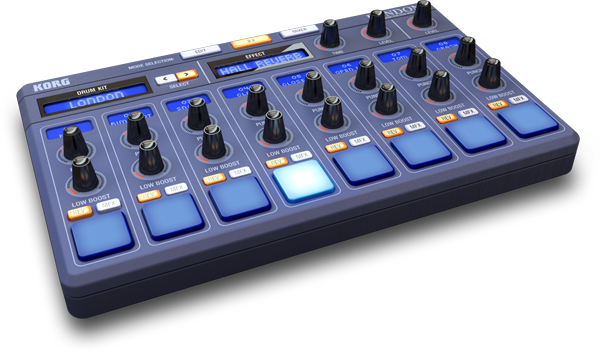Sonar Instrument Definitions Korg Usa

Instrument definitions make life easier when using hardware instruments or effects with Sonar. Despite the ascendancy of software synthesizers, most of us still use some MIDI-controlled hardware synths or signal processors. Hima elop ii crack. To simplify working with them in Sonar, you can use Instrument Definition files (with an INS suffix) that specify the synth's (or effect's) presets and controllers. Upon loading the INS, that instrument definition becomes a part of Sonar.
Nov 30, 2006 - instrument definitions in sonar Korg Karma: Sequencing. My definitions set and all channels set to correct places also like in: fwport1 ch1 out: fwport1 ch1: korg karma prog bank: A patch: a18-flip blip. Location: reno nv usa.
And, when you want to call up a preset, instead of having to figure out which particular preset to assign, you can simply choose its name from a MIDI track's patch pop-up menu (you may also need to specify a bank). Similarly, when assigning automation from the Edit Filter, you can choose the desired controller by name and not have to concern yourself with its number. However, first you need an INS file. We'll cover the four ways to obtain one, going from easiest to hardest: • Load one of the definitions that's included with Sonar.
This is a fairly limited collection of older synths; you can download the collection of files shipped with the latest version of Sonar (which will be compatible with older versions) at. • Locate a user-generated definition, so you don't have to write one yourself. Cakewalk have collected several of them, which you can download from. It's also worth searching the 'net, as there are quite a few user-generated instrument definitions in various corners of the web.
• Modify an existing file that's 'close enough' that you don't have to start from scratch. • Write your own file. Writing an Instrument Definition file isn't particularly difficult; it's sort of like writing an SFZ file or some other text-based code. While some of the process may seem intimidating as you read over this column, when you actually have the Instrument Definition text in front of you, and similar versions, so that you can copy the basic format, it's not that difficult. After making an instrument definition available, you need to assign your MIDI outputs and channels to the desired instrument. The default INS file location is [your user name]/AppData/ Roaming/ Cakewalk/SONAR X1.
You'll see the '.ins' files mixed in with various other files. Any INS files that you import (as described later) become part of a master.ins file, which is also in the same folder. This is the file in which Sonar actually looks for its data. For example, suppose you have an Ensoniq TS10 synthesizer (which you were smart enough to keep around because it has polyphonic aftertouch). This is supported by Sonar, which simplifies the procedure we're about to describe.
(The same procedure is also used to load a user-generated instrument definition file, except that in order to load it, you'd need to navigate to wherever you saved the downloaded file.) • Go Edit/Preferences and, under MIDI, click on Instruments. • Click on Define. If you don't see the instrument you want, click on Import. • Navigate to the folder with the INS files, as described above. In this example, you'd click on Ensoniq.ins, then click Open.
(If you still don't see an appropriate instrument, you'll need to give up and go to a more complex option.) • With many Sonar instrument definitions, you'll see multiple instruments. For example, in the case of Ensoniq, there are not only several synths but also definitions for the DP/2 and DP/4. You would simply click on Ensoniq TS10, then click OK. • The TS10 will appear along with the other available instruments. In the Define Instruments and Names window. Now click on Close.
- понедельник 04 марта
- 92